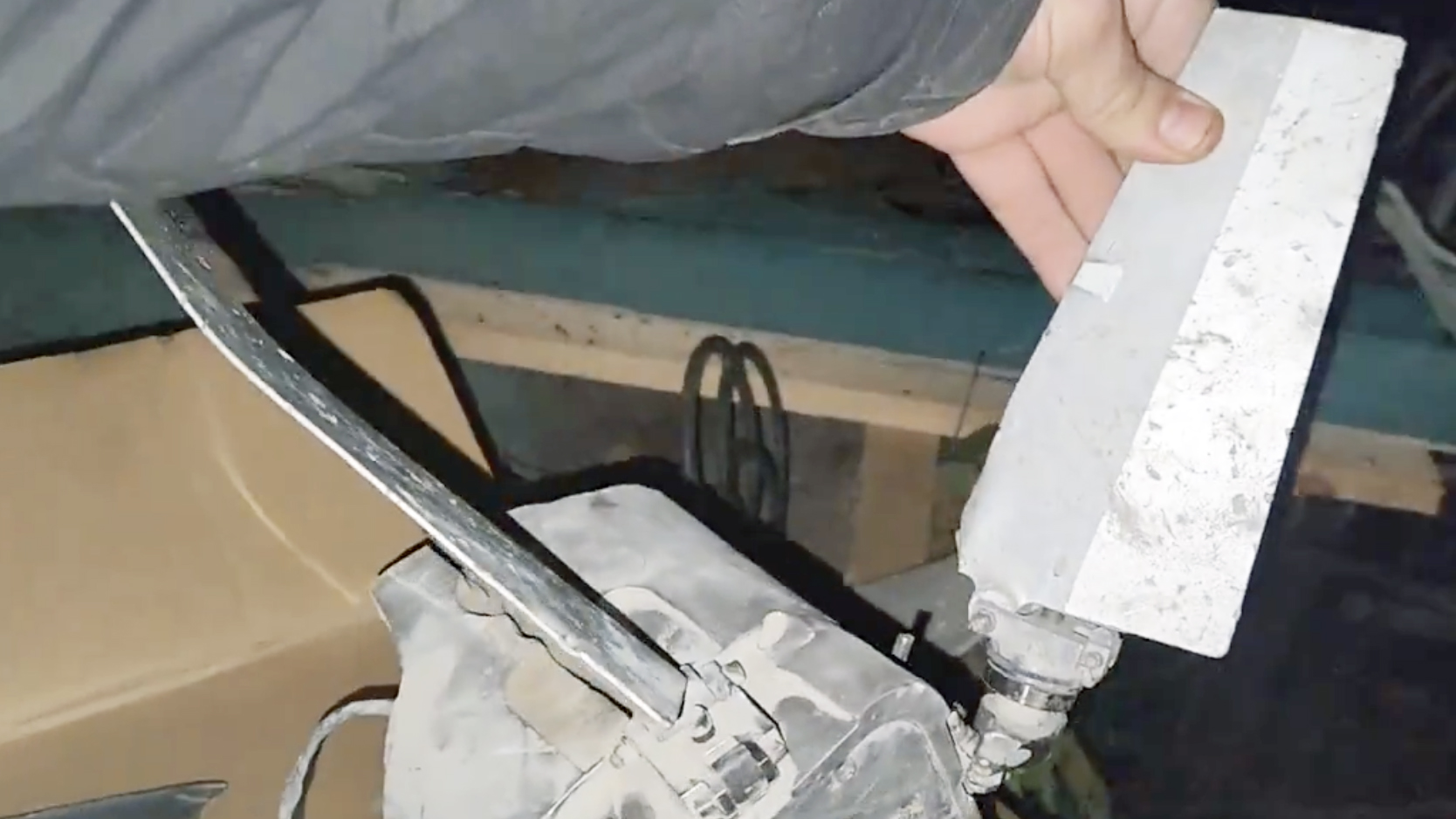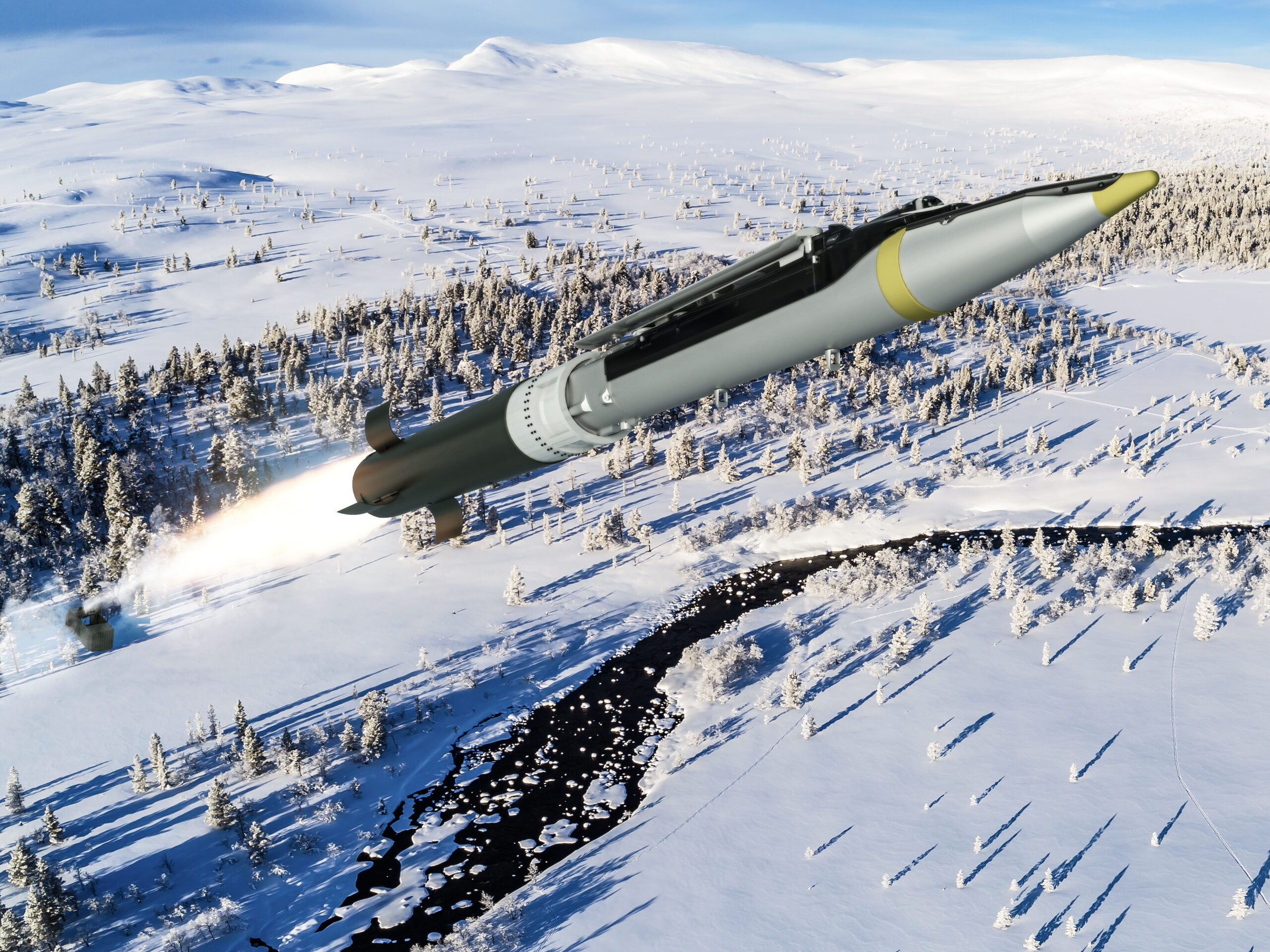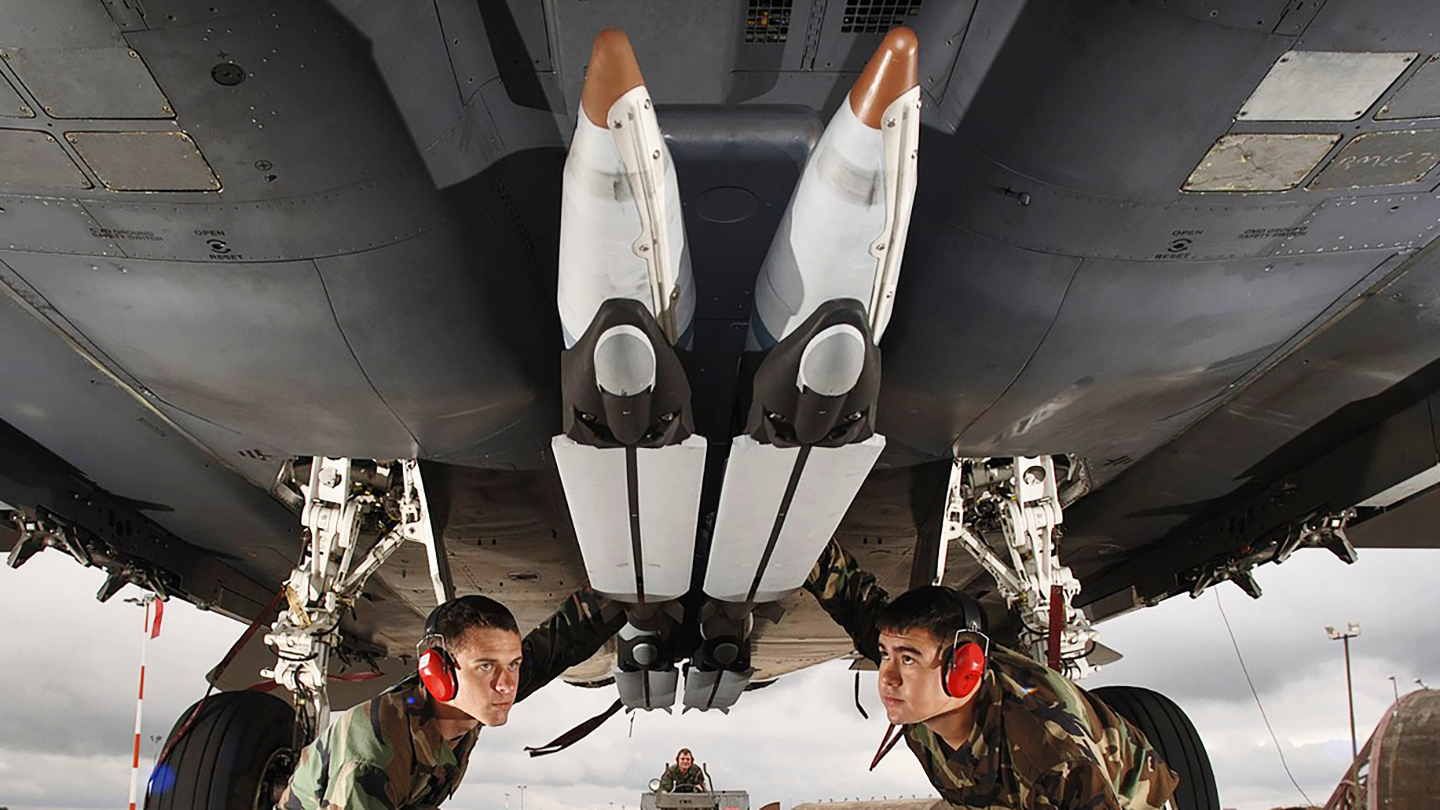The air-launched version of the Small Diameter Bomb (SDB), the GBU-39, has been used in combat by Ukraine, a U.S. official confirmed today. Previously, Ukraine had only been confirmed as having received the Ground Launched Small Diameter Bomb (GLSDB), although the value of this weapon in combat has recently been questioned.
“One U.S. weapon used by aircraft, the GBU-39 Small Diameter Bomb, has proved resilient to jamming,” according to The Washington Post, in an article today citing confidential internal Ukrainian assessments. The same article notes that “nearly 90 percent of dropped [Small Diameter Bombs] struck their target.”

No details are provided about the numbers of SDBs provided to Ukraine and which aircraft are dropping them, but the article states that they began to be delivered to Ukraine in November 2023. This again raises the question of whether the wreckage of weapons used in the conflict that were previously assumed to be GLSDBs were actually SDBs all along. This is a possibility that TWZ considered when wreckage of this kind first appeared, in February this year.

TWZ has also looked at the potential for Ukraine to arm its forthcoming F-16 fighters with SDBs, noting specifically the advantages it brings in terms of accuracy, standoff range, ability to strike semi-hardened static targets, and the large numbers in NATO stockpiles to draw from.
It’s also worth noting that Russia has begun using its own SDB-like glide munition, which you can read all about here.
On the other hand, the surface-launched counterpart of the SDB, the GLSDB has been much less successful, Ukrainian officials told The Washington Post.
Able to strike targets at a distance of around 94 miles, each GLSDB weapon combines an air-launched 250-pound GBU-39/B SDB, which has a set of pop-out wings, with the rocket booster motor from a 227mm-caliber M26 artillery rocket that can also be fired by HIMARS and MLRS.

The ineffective nature of the GLSDB had been reported before, although it’s interesting to consider that the air-launched version of the same weapon is much more reliable.
According to the same documents, the smaller surface area of the SDB makes it harder for Russian air defense systems to detect and intercept it.
As for the surface-launched version, a Ukrainian official told The Washington Post that modifications are now being made to the design before more examples are delivered to Ukraine.
In an article that cites three people familiar with the issue, Reuters reports that Russian electronic warfare has blunted the effectiveness of the GLSDB, with jamming targeting the weapon’s satellite navigation system.
Reuters quotes Boeing as saying that while the current GLSDB can defeat some jamming, one of the sources it spoke to explained that a full solution would take “months.”
Before diving into more developments from the conflict in Ukraine, The War Zone readers can review our previous coverage here.
The Latest
As the Russian offensive in the Kharkiv region of eastern Ukraine continues, the Kremlin’s forces have been carrying out further strikes against the region. According to local officials, Russian missiles killed at least seven civilians in Kharkiv yesterday. At least 20 more people were wounded in the attack, which used repurposed S-300 surface-to-air missiles, regional governor, Oleh Syniehubov, said.
Ukrainian President Volodymyr Zelensky described the attack as “extremely cruel” and expressed renewed frustration at not getting enough air defense systems from Western allies.
Zelensky also said that Russia has stockpiled 10,000 S-300 missiles, which can be used for both land attack as well as their original air defense role. You can read more about the S-300’s secondary strike capability here.
After Kharkiv, Ukrainian officials fear that the Sumy region, in northeast Ukraine, could be the focus of the next major Russian offensive.
According to local officials, Russian troops are already making incursions in the region. Regional governor Volodymyr Artiukh confirmed that nearly 1,500 people, including 200 children, have already been evacuated from the towns of Bilopillia and Vorozhba in the Sumy region.
Ukraine’s army chief Oleksandr Syrskyi recently said that his troops are preparing to defend against a new offensive in the region.
The war of words between China and the United Kingdom continues to escalate. After a senior British government official accused China of providing or preparing to provide lethal aid to Russia for the war in Ukraine, Beijing blamed the United Kingdom for derailing a potential peace deal.
“U.S. and British defense intelligence have evidence that lethal aid is now, or will be, flowing from China to Russia and into Ukraine,” said British Secretary of State for Defense Grant Shapps.
In a statement in response, the Chinese Ministry of Foreign Affairs said: “It is Britain, not China, that is adding oil to the fire of the Ukrainian conflict; it was London that prevented Russia and Kyiv from reaching an agreement two years ago” — a reference to claims that the then British Prime Minister Boris Johnson pressured Kyiv into continuing the fight, rather than accepting ceasefire terms.
There are signs now that another ceasefire proposal could be on the table.
According to Reuters, four Russian sources confirmed that Russian President Vladimir Putin is ready to halt the war in Ukraine if a negotiated ceasefire can be agreed upon that recognizes the current battlefield lines.
“Putin can fight for as long as it takes, but Putin is also ready for a ceasefire — to freeze the war,” one of the senior Russian sources reportedly said.
Changes are afoot in the General Staff of the Ukrainian Armed Forces, where there are plans to reduce the number of staff by 60 percent, with some of them being sent to combat units. The plans were confirmed by Brig. Gen. Yevhenii Ostrianskyi, Head of the Main Department of Defense Planning of the General Staff.
“A functional review was conducted at the General Staff in February-March this year, which resulted in a decision to optimize the staffing of some structural units and military command and control bodies,” Ostrianskyi said. “This process includes the disbanding of a number of military organizational structures, the formation of new ones, and the optimization of existing ones.”
In the latest twist in the Starlink saga, there are reports that Russia has illicitly acquired examples of the satellite-based internet terminal for use in its invasion of Ukraine.
A senior U.S. defense official told Congress that the Pentagon is now working with SpaceX to identify and disable Starlink terminals now in the hands of Russian forces, Space News reports.
John Hill, the Pentagon’s deputy chief of space policy, said that SpaceX has been “more than cooperative” and “forward-leaning” in working to find the Russian-operated terminals and then shut them down.
The first group of Ukrainian Air Force pilots to convert to the F-16 have completed their training syllabus in the United States and are now headed to Europe for further training on the fighter.
According to Politico, the first cadre of Ukrainian pilots have now graduated from their F-16 course at Morris Air National Guard Base in Tucson, Arizona, facilitated by the 162nd Wing. As we reported in the past, this first course began in October 2023.
The Air National Guard has not confirmed how many pilots graduated from the course or the exact date that they completed it, “out of an abundance of caution for their safety.”
More potential Ukrainian F-16 pilots are meanwhile undergoing training in France, on the Alpha Jet advanced jet trainer. The ten pilots are reportedly from the same group who graduated from elementary flying training with the U.K. Royal Air Force in March of this year.
The nature of the opposition that future Ukrainian Air Force F-16 pilots may face is well summed up in the next video, official footage from the Russian Ministry of Defense showing Russian Navy Su-30SM multirole fighters in action. The video claims to show portions of a combat mission, during which Su-30SMs are seen dropping freefall bombs and performing strafe with their 30mm cannons. However, it cannot be confirmed if this is genuine combat camera footage, or whether it actually shows an exercise over the Black Sea. Still, the threat posed by small unmanned surface vessels has all capable aircraft in Crimea tasked with hunting and destroying them.
Meanwhile, another Russian attack on a Ukrainian air base again demonstrates the need for new fighter equipment for the Ukrainian Air Force. While the results of this attack cannot be confirmed, mainly due to the poor quality of the video, the ability of Russian forces to strike at the bases, apparently at will, is certainly concerning.
In this instance, the target was a MiG-29 Fulcrum fighter, apparently at an air base near Aviatorske in the Dnipropetrovsk region of southeastern Ukraine.
In the United States, House Foreign Affairs Chairman Michael McCaul has called upon Secretary of State Antony Blinken to lift the ban on Ukraine’s military using U.S.-supplied weapons to hit targets across the border in Russia.
“They cannot achieve victory with the restrictions you placed on them,” McCaul told Blinken, during a congressional hearing.
In recent weeks, there have been signals that the United States may be about to reconsider the restrictions it placed on the Ukrainian use of long-range weapons, in particular, to strike back against Russian drone and missile launch sites that are used for attacks on Ukraine.
As part of the hearing, the Texas congressman presented a map showing the potential reach of U.S.-supplied Guided Multiple Launch Rocket Systems (GMLRS) munitions and Army Tactical Missile System (ATACMS) short-range ballistic missiles.
The map also included Russian artillery, rockets, and missiles on the Russian side of the border in a “sanctuary zone” that Ukraine is not currently allowed to hit with U.S.-supplied heavy weaponry, even in self-defense.
In response, Blinken said that the Biden administration was not “enabling or endorsing attacks outside Ukraine … but Ukraine will have to make, and will make, its own decisions and I want to make sure it gets the equipment it needs to effectively defend itself.”
Meanwhile, the impact of the U.S.-supplied ATACMS missiles continues to be felt within Ukrainian borders including Russian-occupied Crimea.
One account, purportedly from a Russian military commissar, warns soldiers that: “The enemy has a means of destruction to a depth of at least 300 kilometers” — or 186 miles — before pointing specifically to the hazard posed by the ATACMS version with a cluster warhead.
The commissar warns that soldiers should not “organize formations or concentrations of personnel closer than 300 kilometers from the contact line” and also alerts troops to potential follow-on strikes against the same target. He says that Ukraine “very often” sends another missile against the “excessive concentration of personnel” that might be found at the rescue site.
There has been another flurry of reports about potential ATACMS strikes on the Russian-occupied Crimea peninsula.
Ukrainian military bloggers and unofficial media reported that several targets were hit throughout the peninsula overnight.
News outlet RBK-Ukraine reported that targets likely included a Russian Coast Guard headquarters and intelligence centers.
While the reports cannot be independently verified at this point, the Russia-appointed head of the Crimea peninsula admitted that a Ukrainian missile attack killed two people near Simferopol, the main administrative center.
Elsewhere in Crimea, it appears that Russia is constructing additional barriers around the Kerch Bridge in what looks to be a measure to defend against the growing threat posed by Ukraine’s naval drones. The bridge has been targeted by naval drones before, including in July 2023, as you can read about here.
Recent satellite imagery from the port of Sevastopol, the home of the Black Sea Fleet in Crimea, reveals what may be the signs of a recent ship loss there. Imagery from May 23 suggests that a vessel may recently have been sunk off a pier at the base, with its mast apparently seen protruding from the water. There are also potential signs of damage close to a building on the edge of the water.
Earlier this week, the Ukrainian Ministry of Defense posted claims for the destruction of two more Black Sea Fleet vessels, the Project 22800 Karakurt class missile corvette Tsiklon and the Project 266M Akvamarin class minesweeper Kovrovets.
There have been more calls from within the European Union to establish a robust, continental air defense system to better protect against potential future attacks from Russia.
In particular, Greece and Poland are now saying they want to see the European Union create an “air defense shield” against Russia.
“Europe will be safe as long as the skies over it are safe,” Polish Prime Minister Donald Tusk, and his Greek counterpart Kyriakos Mitsotakis, wrote in a joint letter to the European Union chief, Ursula Von der Leyen. The two leaders called for “a comprehensive air defense system to protect our common E.U. airspace against all incoming threats.”
While we have seen the Ukrainian-operated ASRAAM air-to-air missile in its unique surface-launched application before, we haven’t seen the missile itself in such close detail as in the next video. The infrared-guided missile is mounted on a 6×6 Supacat all-terrain truck chassis, with a twin-rail launcher for a pair of the missiles mounted at the rear.
Recent evidence suggests the Russian Armed Forces may be struggling to field adequate numbers of suitable vehicles as the offensive in Ukraine grinds on.
Two recent examples show the UAZ-452 series four-wheel-drive off-road van, better known as the bukhanka, in use as an infantry carrier.
More extraordinary still is this civilian automobile, also pressed into military service.
Meanwhile, there are reports that around a dozen PAZ series civilian buses have been adapted by Russia to serve as mobile command centers for drone operations. Each of the adapted buses is said to have space for up to seven drone operators.
Ukrainian vehicles next, both military and agricultural.
The first video shows a Ukrainian Armed Forces T-80BV tank fitted with a novel collapsible anti-drone screen over the turret. This can be folded down to provide better access and vision from the turret, as well as making it possible to use the turret-mounted machine gun. If drones are present, the screen can quickly be erected to provide protection.
As well as blasting Russian tanks with its 25mm cannon, the M2 Bradley infantry fighting vehicle can play a more humanitarian role on the battlefield, as seen in the next video. Here, one of the Ukrainian IFVs is seen coming to the rescue of the crew of another vehicle of the same type, picking the soldiers up and getting them out of danger while still under fire.
In the next video, Ukrainian soldiers, reportedly in the Kharkiv area, were woken by what they thought was an advancing Russian tank. In fact, the vehicle was a much-less threatening proposition: a crop-sprayer belonging to a local farmer.
An interesting example of a measure taken by Ukrainian industry to maximize the lethality of their weapons. In this case, steel pipe is produced with indentations that are designed to create more fragmentation, and spread lethal fragments over a wider distance. The piping is then used for the bodies of explosive devices carried by first-person-view (FPV) and other types of drones.
Finally, two types of U.S.-supplied man-portable missiles that made a major impact when they first appeared in the conflict, but which have not necessarily been seen regularly in more recent months.
The first of the FIM-92 Stinger shoulder-launched surface-to-air missile, a weapon that has long been in demand to deal with low-level threats, including drones.
Next, the FGM-148 Javelin anti-armor missile, a weapon that gained fame for the heavy toll it took on Russian armor early on in the invasion.
That’s it until our next update.
Contact the author: thomas@thewarzone.com
